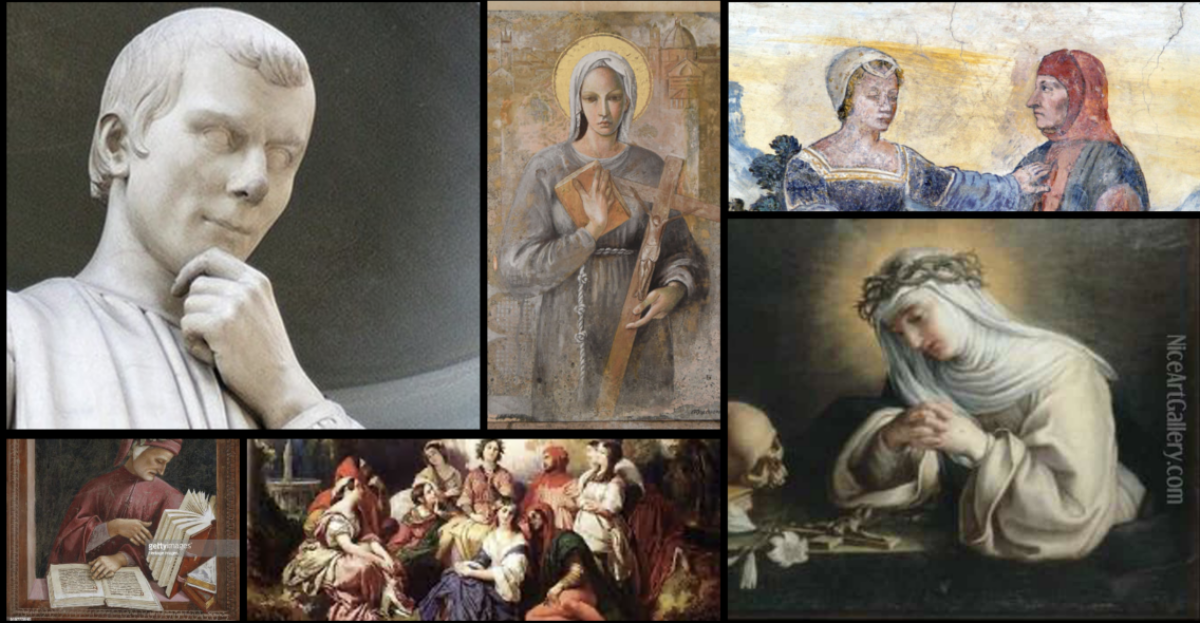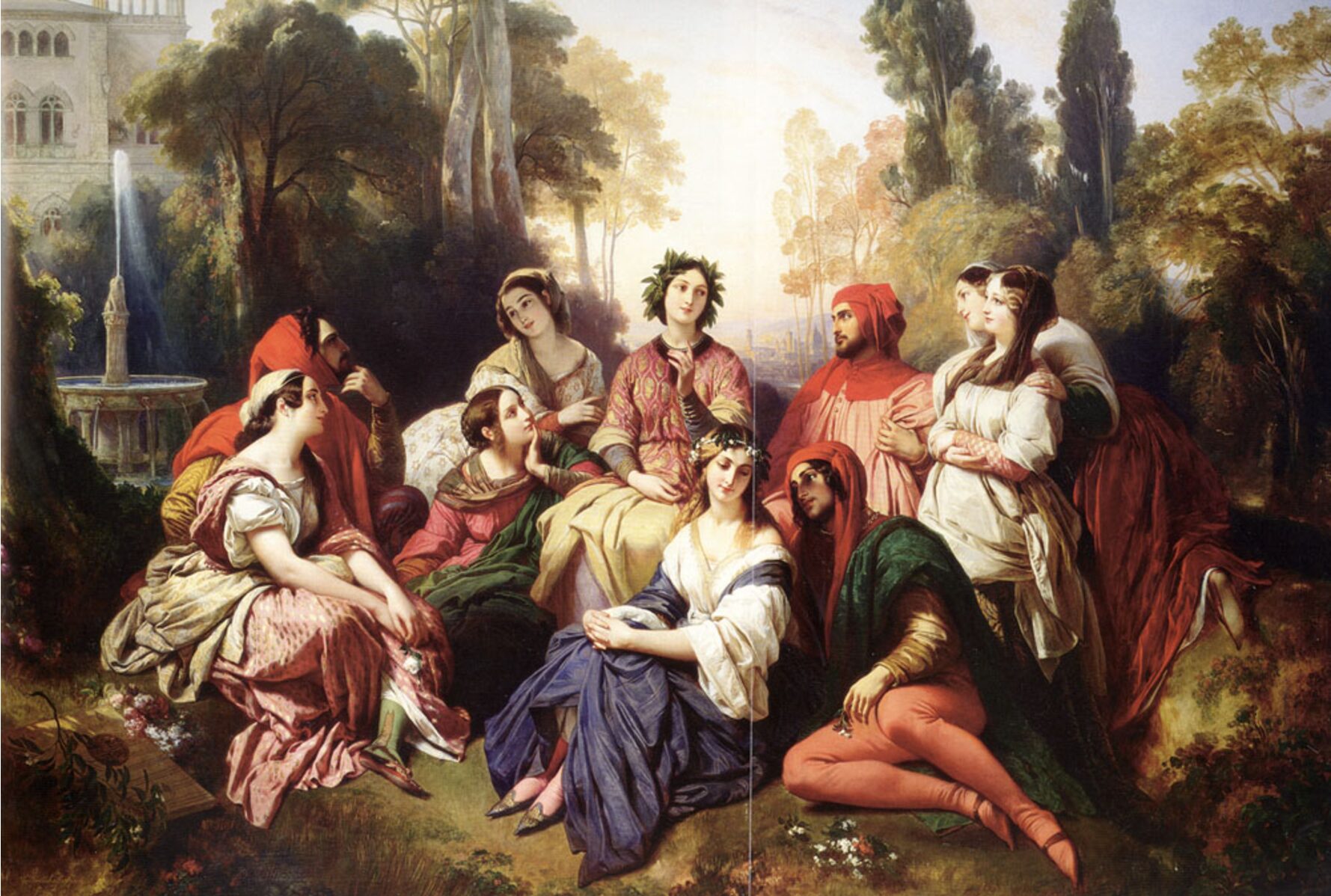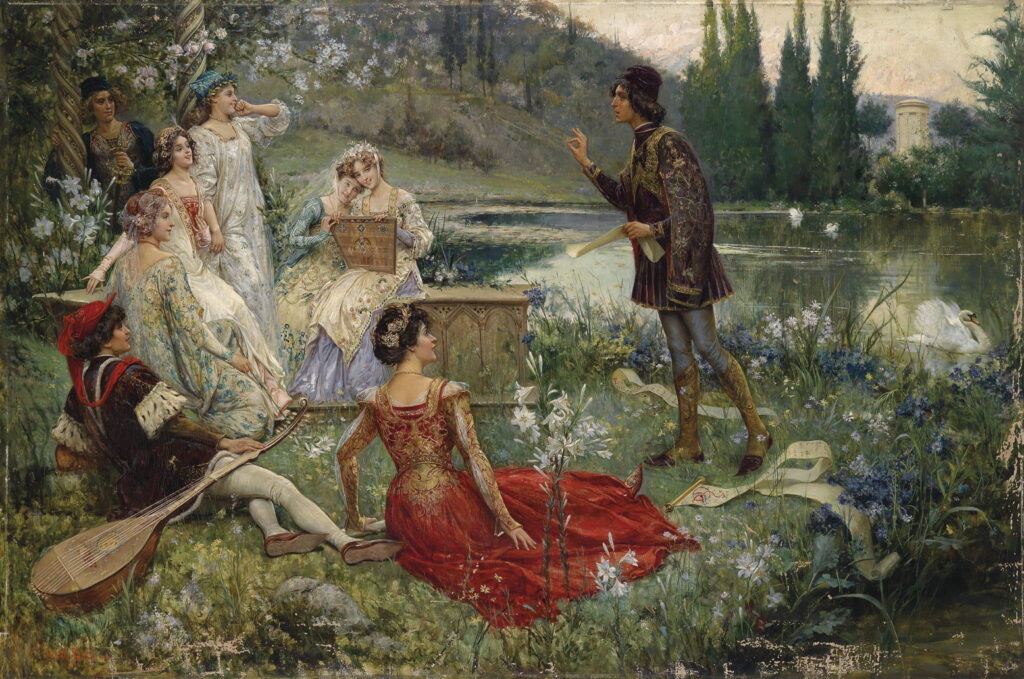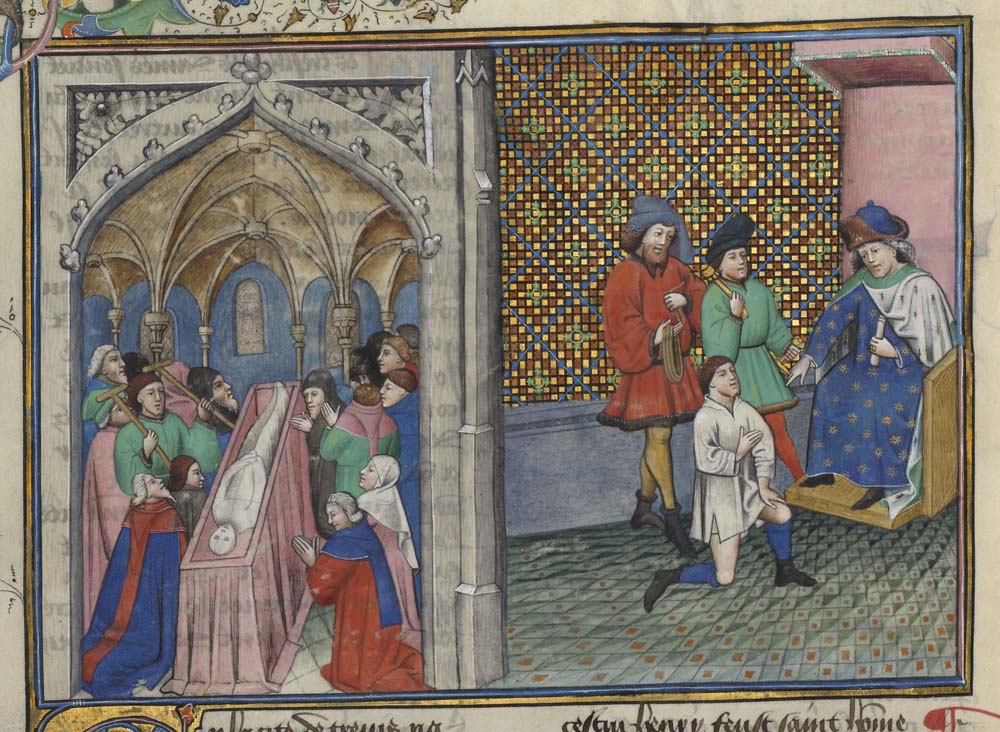The way that women are portrayed in media and literature is a longstanding issue that has seen constant changes over time. We see much more representation for women in literature now, and this is thanks to many writers of the past, such as Giovanni Boccaccio, who helped break these stereotypes. Boccaccio was the creator of the text, ‘The Decameron’, created in 1358. It is a book that contains a series of stories played out within a 10 day time frame, 10 stories written each day, all occurring during the Black Plague of 1346. In this series of stories, Boccaccio covered many topics, such as fortune, nature, trickery, violence, and many others. However, one of the most common and talked about themes in ‘The Decameron’ is women and they’re role in society.
In ‘The Decameron’, Boccaccio portrays women as being smart and cunning. In the 1300’s, women were not allowed to have a say in their choices due to the sexist laws and strict gender roles that were forced upon them. Boccaccio, however, showed that women could stand up for themselves in many stories, such as in Day 6 Story 7. In Day 6 Story 7, Madonna Filippa gets caught cheating on her husband, Rinaldo. At the time, there was a law in Prato, Italy that stated that any woman that gets caught cheating will be burned alive. Many of her family and friends were telling Filipa to run away so she doesn’t get killed, but she didn’t believe the law was fair and equal and wanted a chance to stand her ground. She went to her trial and started talking to judge, saying that, “which conditions are wanting to this law, inasmuch as it binds only us poor women, in whom to be liberal is much less reprehensible than it were in men” (Day 6 Story 7, line 14). Through the use of her voice, Filipa was able to save herself from death and explain to the judges at the trial how it was unfair that the law targeted women and not men. She states how they could “ask my husband if I ever gainsaid him, but did not rather accord him, when and so often as he craved it, complete enjoyment of myself”(Day 6 Story 7, line 15), and how she had much more love to give to others. This was also seen in Day 7 Story 3, when Madonna Agnesa also cheats on her husband with Rinaldo. In this story, Rinaldo falls in love with his neighbor, Agnesa, and tries to get closer by asking her to consider having him as the godfather. Agnesa isn’t interested by efforts, and Rinaldo becomes a friar. Rinaldo, like the most friars during that time, becomes corrupt, and persuades Agnesa into having an affair. She agrees, but almost gets caught by her husband in which she lies too and says that her son “was taken but now, all of a sudden, with a fainting fit, so that I thought he was dead: and what to do or say I knew not, had not Fra Rinaldo, our sponsor, come just in the nick of time” (Day 7 Story 3, line 30). Based on these two stories, it’s made clear that Boccaccio believes women, like men, can be cunning and use their wit to defend themselves.
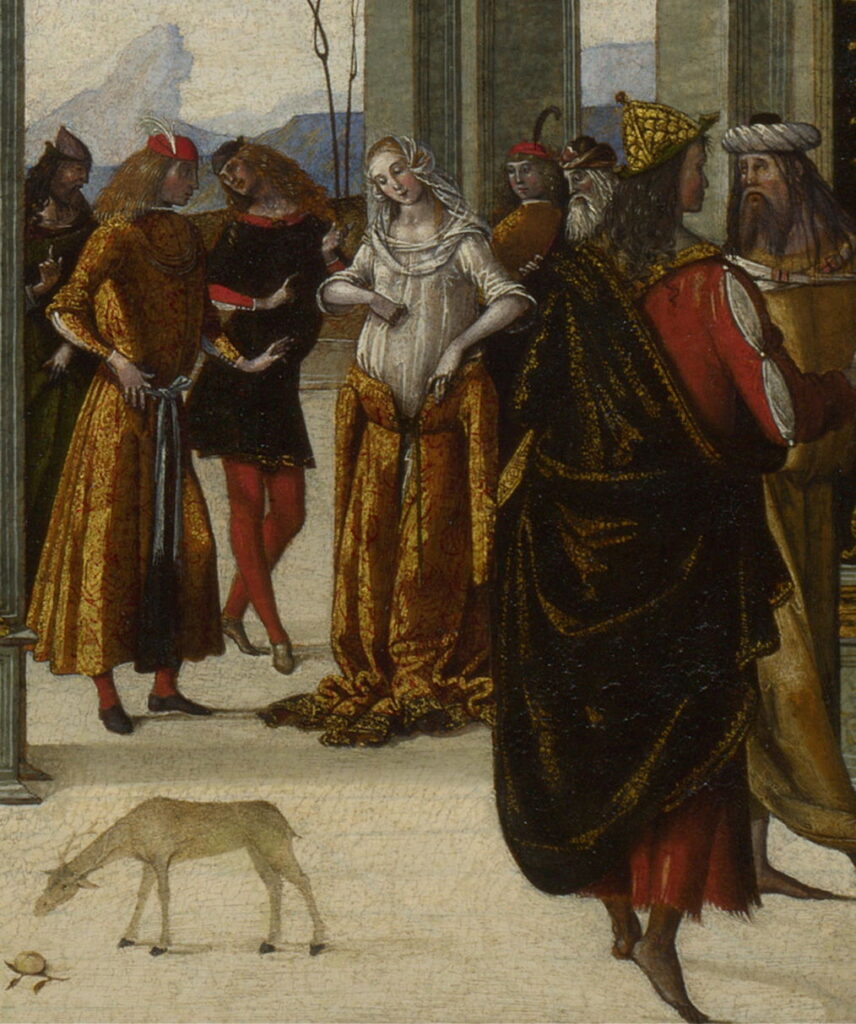
Throughout this text, it’s clear that Boccaccio believed women should follow what their heart desired, even if it involved cheating on their partners. In many stories, such as the ones that were previously discussed, many of the women ended up having an affair and cheating on their husband because “Boccaccio demonstrates that women are significantly more sexual than men” (Kulshrestha, page 1). For example, in Day 4 Story 9, Guillaume de Roussillon has a wife that he found was cheating with his best friend, Guillaume. Guillaume de Roussillon found out about the affair between them, and ended up killing Guillaume and serving his heart to his wife. However, when he informed the wife about eating the heart, she stated “but God forbid that fare of such high excellence as the heart of a knight so true and courteous as Sieur Guillaume de Cabestaing be followed by aught else” (Day 4 Story 9, line 23), saying that since this was the best thing god has given her to eat, she will ever eat again. She then started “stepping back to a window that was behind her, without a moment’s hesitation let herself drop backwards therefrom” (Day 4 Story 9, line 24). This is a good example of women giving into nature because although his wife cheated, she gave into nature, and ended up dying for the person she loved more, ultimately cheating and leaving Guillaume. By including this story in ‘The Decameron’, Boccaccio shows women should give into their needs, without the consideration of others.
Lastly, Boccaccio also portrays women as people who are resilient and patient. In Day 10 Story 10, Gualtieri becomes the Marquis of Saluzzo and needs to marry to provide the family with an heir; he ends up falling in love with a poor girl of low-nobility, Griselda, and buys her marriage through her father. After marrying Griselda, he then wants to test her goodness and purity, through a series of cruel trials. Through cruel acts such as taking away her kids and telling her that they were dead, it became clear to Gualtieri that Griselda was a very resilient and patient woman, and that no matter what obstacle he put her with, she always fought through and stayed by his side. Gualtieri then divorces her and marries another woman to “to put her patience to the proof by prolonged and intolerable hard usage” (Day 10 Story 10, line 27), even still Griselda held strong. He remarries her, and proves her strength in the end by forgiving him for these tests that she had to go through. Boccaccio “demonstrates that women tolerate more adversity than men do, this increased tolerance for adversity may stem from a basic lack of options” (Kulshrestha, page 1). This is clearly shown in Day 10 story 10, as Griselda stayed without being able to do much, and just giving into whatever Gualtieri said.
As seen throughout ‘The Decameron’, it’s clear that Boccaccio shined women in a high light. He portrays them as being resilient, patient, lustful, smart and cunning. He gave a different perspective on the way women were seen, and gave readers an idea as to how he portrayed women.
Decameron web. Decameron Web | Texts. (n.d.). Retrieved December 20, 2021, from https://www.brown.edu/Departments/Italian_Studies/dweb/texts/DecShowText.php?myID=nov0101&lang=eng.
Kulshrestha, S., 2021. Giovanni Boccaccio’s “The Decameron” and the Roles of Men and Women. [online] Inquiries Journal. Available at: <http://www.inquiriesjournal.com/articles/344/giovanni-boccaccios-the-decameron-and-the-roles-of-men-and-women> [Accessed 20 December 2021].
